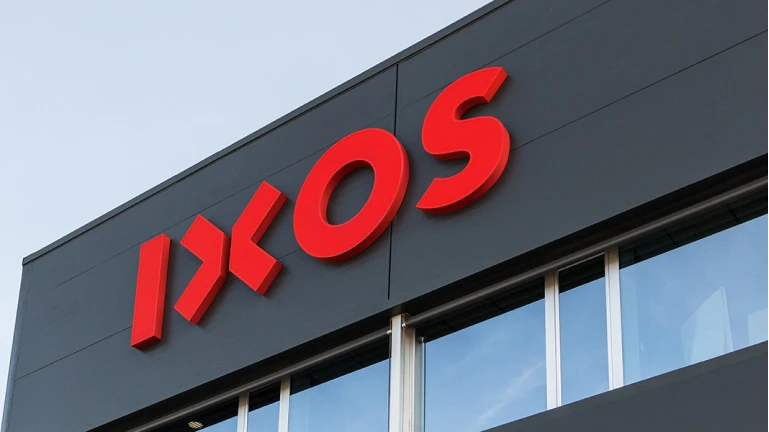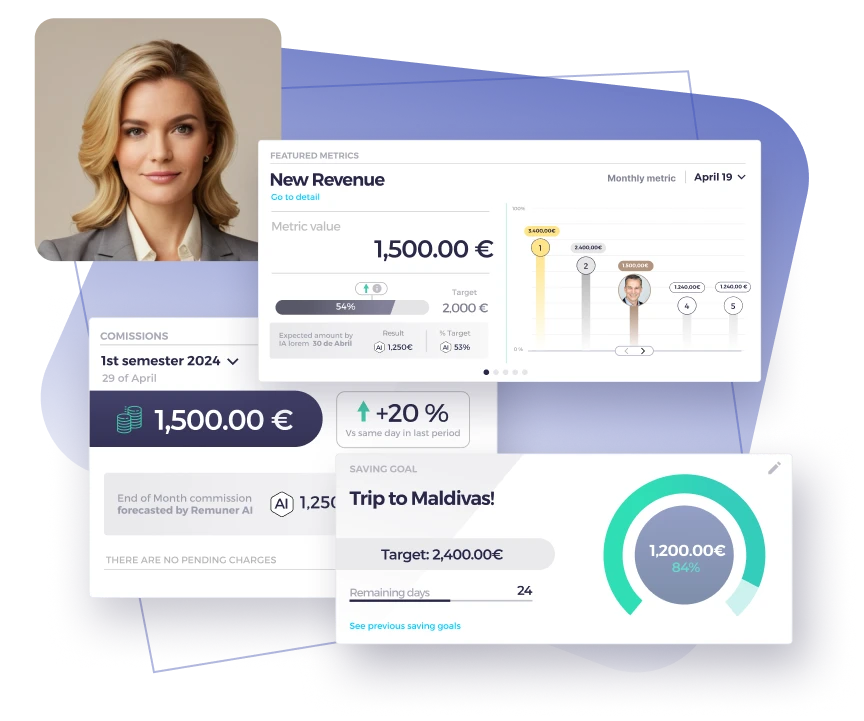Table of contents
Incentive pay has become a cornerstone of sales compensation. For sales professionals, earning beyond their base salary isn’t just a perk—it’s a core motivator. This form of compensation, often structured around hitting sales targets, or quotas, can significantly impact not only individual sales performance but the overall success of a business.
In this article, we’ll break down what incentive pay is. You would also explore its role in sales compensation, and understand how it can motivate employees to consistently perform at their peak.
What is Incentive Pay?
Incentive pay, also referred to as performance-based pay, is any form of compensation directly tied to meeting or exceeding specific goals. In the world of sales, these goals often revolve around revenue generation, customer acquisition, or even achieving certain customer retention metrics. The primary purpose of is to drive behavior and performance that aligns with business objectives.
For sales teams, incentive pay comes in many forms—commissions, bonuses, or sales incentives. The key characteristic that defines this one is its connection to results. Salespeople know that when they close deals or surpass quotas, they stand to gain not only recognition but also financial rewards.
The Role of Incentive Pay in Sales Compensation
In sales, compensation plans usually combine a fixed salary with variable pay elements like incentive pay. This balance between security and opportunity encourages employees to take ownership of their performance. An effective incentive pay structure motivates sales professionals to exceed their quota targets, ultimately driving overall sales performance.
One of the most common structures in sales compensation is OTE (on-target earnings), which provides a clear breakdown of base salary and potential incentive pay if certain targets are met. This transparent approach ensures that sales teams know exactly how much they can earn if they deliver results, adding a clear pathway toward higher earnings.
By leveraging incentive pay, companies can set achievable yet ambitious quota targets. A well-designed compensation plan incentivizes employees to go beyond these minimums, maximizing their potential earnings while driving overall company success.
Types of Incentive Pay in Sales
There are various types of incentive pay that can be used to motivate sales professionals, depending on the specific goals and structure of a business. Here are the most common types:
1. Commission-based pay
Commission is the most traditional form in sales compensation. It rewards salespeople with a percentage of the revenue they generate.
For instance, a sales representative who closes a $50,000 deal with a 10% commission rate would earn $5,000 in incentive pay.
This model is popular because it aligns the salesperson’s success with the company’s success. The more sales they close, the higher their compensation.
2. Bonuses
Bonuses are another popular type of incentive pay and are typically awarded for meeting specific performance metrics or quota targets. Unlike commission, which is paid per sale, bonuses are typically paid as a lump sum at the end of a quarter or year.
A salesperson might receive a $10,000 bonus for exceeding their quarterly sales performance goal by 20%.
3. Profit-sharing or revenue-sharing
In this form of incentive pay, salespeople earn a portion of the company’s profits or revenue once they exceed their targets. This type of incentive aligns individual performance with the company’s overall financial success and is often used to foster teamwork, as all employees benefit from each other’s efforts.
4. SPIFs (Sales Performance Incentive Funds)
SPIFs are short-term, performance-based sales incentives. They might be used to boost sales during a specific period (such as a slow month) or to promote a new product.
For example, a company might offer an additional $1,000 bonus for every sale of a specific product made within the month.
5. Stock options or equity
In some cases, companies offer long-term incentive pay in the form of stock options or equity, especially in startups or high-growth organizations. This model aligns individual sales success with the company’s long-term growth, incentivizing employees to stay with the company and contribute to its sustained success.
Designing an Effective Incentive Pay Plan
To create an effective plan that maximizes sales performance, it’s essential to ensure that the structure is aligned with both the company’s objectives and the employees’ motivations. Below are some considerations for designing a plan:
1. Align incentives with goals
The purpose of incentive pay is to drive behaviors that lead to the company’s success. Whether it’s increasing revenue, improving customer retention, or expanding market share, the sales incentives must reflect these priorities. For instance, if your goal is to increase recurring revenue, this might be tied to the value of subscription renewals.
2. Set achievable but challenging quotas
To maximize the effectiveness, it’s important to strike a balance between ambitious quota targets and achievable goals. When quotas are too high, they can demotivate salespeople. When they’re too low, they might not push employees to perform at their best.
3. Offer visibility into earnings potential
A transparent plan that clearly outlines the connection between performance and earnings drives motivation. Salespeople should understand exactly how their actions will impact their compensation. OTE structures, for example, provide a clear picture of both base salary and variable pay potential.
4. Incorporate gamification
Gamification can turn sales incentives into a powerful motivator. Using leaderboards, rewards, or recognition for top performers can create a competitive atmosphere that pushes employees to exceed their quota targets.

Real-World Examples of Incentive Pay in Action
Let’s explore how some companies use incentive pay to drive their teams’ sales performance:
- Example 1: Tech Company
A technology company focused on software-as-a-service (SaaS) products offers a hybrid incentive pay plan that combines both commission and bonuses. Their sales reps earn a 5% commission on each new deal closed, along with a $2,000 bonus for exceeding their monthly quota by 10%. This structure ensures that sales professionals are incentivized not just to close deals, but to go above and beyond.
- Example 2: E-commerce Business
An e-commerce company ties its incentive pay to customer retention. Their salespeople receive bonuses based on the number of customers retained through loyalty programs. For example, a 10% increase in customer retention from one quarter to the next could trigger a $5,000 team-wide bonus. By aligning their incentive pay with long-term customer relationships, the company encourages salespeople to build lasting connections.
- Example 3: Retail Chain
A retail company uses incentive pay to push specific products during peak shopping seasons. For instance, they offer an additional $500 bonus for every 50 units of a high-margin product sold during the holiday season. This sales incentive boosts short-term sales performance while promoting specific products that contribute to higher profitability.
How Incentive Pay Impacts Sales Performance
Effective incentive pay programs lead to better sales performance. When sales teams understand how their efforts translate into earnings, they are more likely to stay motivated and push to achieve higher results. Research shows that employees who are consistently rewarded through sales incentives have higher job satisfaction, are more engaged, and perform at a higher level.
Incentive pay also helps businesses identify top performers. Sales professionals who consistently exceed their quota can be promoted, groomed for leadership roles, or placed in more strategic positions within the company.
Unlock the potential of your team
Incentive pay plays a pivotal role in sales compensation. By carefully designing this kind of plans that align with business goals and motivate employees, companies can drive top-notch sales performance. From commissions to bonuses to gamified sales incentives, offering clear, achievable paths to financial rewards ensures that sales professionals remain engaged and driven to hit their targets.
Whether your company is looking to increase revenue, boost customer retention, or promote specific products, a well-structured incentive pay plan is key to unlocking the full potential of your sales team.
How Remuner Can Enhance Your Incentive Pay Strategy
Implementing an effective structure can be complex, but Remuner simplifies the process. Our platform automates every aspect of your sales compensation plan, from managing OTE calculations and commission payouts to setting up custom sales incentives and bonuses. With Remuner, sales teams gain real-time visibility into their performance and earnings, empowering them to exceed their quota targets and maximize their sales performance.
Our AI-based sales coach keeps teams motivated by providing personalized feedback and actionable insights, ensuring alignment with company goals. Whether you’re looking to drive higher revenue or increase employee retention, this is for you. Remuner helps you build and manage sales commissions plans that inspire success while eliminating administrative burdens. Ready to transform your incentive pay approach? Let Remuner guide the way.





